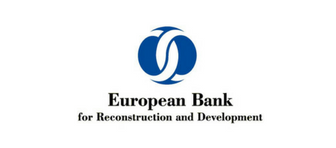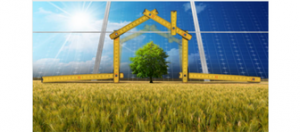12 October 2017

By Vlaho Kojakovic, Marilena Vuiu and Alexander Hadzhiivanov, EBRD

“Green” stands for the environment. It stands for the earth, water and nature, for habitat and for home. Green strategies, green frameworks, green cities, green investments, green bonds, green buildings, green everything. From governments to corporations, from NGOs to stock exchanges, from large communities to each and every one of us, we all need to contribute to make our world “greener” and our environment more sustainable.
“Green” comes in many shapes and sizes, but rarely does it come bigger than in buildings. Buildings consume over one-third of the energy used worldwide, and in developed countries that rate is even higher, more than 40 per cent. At the same time, about one-third of global carbon emissions are generated in the building sector.
The main purpose of a building is to shelter and protect its inhabitants from the elements and allow them to perform their duties. Depending on the type of building, whether it is a residential or an office building, a school, hospital or perhaps a commercial building, they all need to be adequately equipped to provide an acceptable living and working environment.
A building needs an external “coat” and a set of internal installations such as heating, air-conditioning, plumbing, lighting, communication, fire safety, transportation systems and many services. Buildings consume resources such as electricity, energy or water and have an impact on the environment. The more efficient these systems are, the lower their overall environmental footprint, the lower the pollution level, the greener and more sustainable the building is.
But a green building is not only about consumption. It should also be a “healthy” building, providing an environment free of harmful substances or exposure to health risks. And finally, to assess how green a building is, one also must take into account how it is being serviced and maintained.
The demand for green buildings is expected to rise dramatically over the next decades. Projections indicate that the world’s population will surpass 8 billion by 2030, with the majority (60 per cent or 4.8 billion people, respectively) living in urban areas. This will result in considerable growth of the construction and real estate markets. In addition to constructing new buildings, there is also enormous pressure to refurbish existing stock. According to estimates, about 75 per cent of the current building stock will need to undergo a deep renovation by 2050.
To reach the minimum targets set in the Paris Agreement on combating climate change, green renovations of existing buildings must reach a rate of 6 to 8 per cent by 2040. However, the current renovation rate is below 1 per cent in many countries. This illustrates the size of the challenge. But it also demonstrates the extent to which green buildings offer opportunities – in construction, in innovation, in job creation and in financing. The global market for energy efficiency investments was estimated at US$ 231 billion in 2016, the majority of which (56 per cent) was energy efficiency investments in buildings. Not surprisingly, financial institutions have long discovered the market opportunity green buildings represent.
The EBRD is a leader in this field. We invest in green buildings and promoting the highest standards of environmental performance in our projects. And we have developed a large skillset and expertise in tackling climate change and supporting green and sustainable energy. The innovative and tailor-made financing products applicable in the building sector include green investments through direct debt or equity finance (for example, green property funds or real estate trusts, smart retail), financing frameworks (GEFFs) extended through local financial institutions or non-financial intermediators such as utilities or energy service companies, and larger-scale public-private partnerships with public authorities and other players.
The EBRD’s approach to the challenge runs through the work of all departments. Consequently, the EBRD Property and Tourism team has identified building sustainability and advanced resource efficiency as central goals in all its projects. Going beyond pure real-estate investment, we look at our projects in the sector as an opportunity to change the lives of people who will work or live there and create new economic opportunities though their use. This approach is also true for the EBRD Municipal and Environmental Infrastructure department which is actively pursuing opportunities identified by the Green City Action Plans developed by the Energy Efficiency and Climate Change Team. The EBRD’s Financial Institutions department has set up over a dozen dedicated green residential financing facilities across the region.
The EBRD’s work to finance and promote green buildings is part of the Green Economy Transition (GET) approach under which the EBRD seeks to increase the volume of green financing from an average of 24 per cent of its annual business investment in the 10 years up to 2016 to 40 per cent by 2020. Since 2006 the EBRD has invested over €2 billion in green buildings and upgraded to the highest standards over 63,000 of building assets of overall floor area at over 25 million square metres.